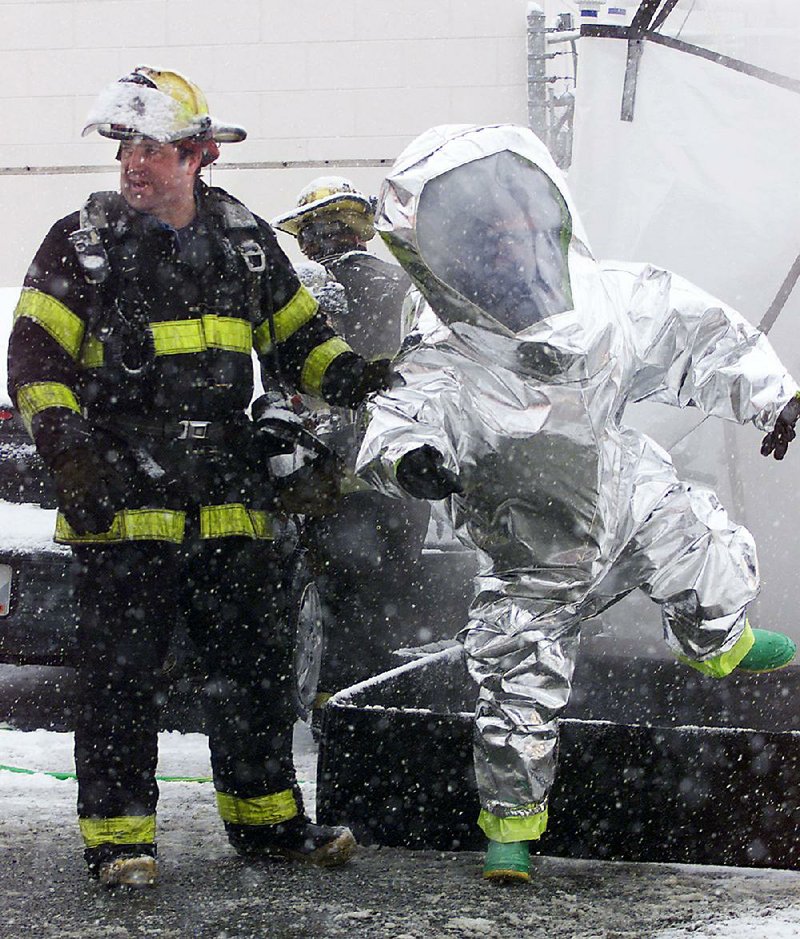Dear Otus,
I can't believe I've already had to wash the pollen off my car three times this week. I know you write about this every spring, but is this supposed to be an especially bad year for allergies?
-- Donna Phyll,
Granite Mountain
Dear Donna,
It was wholly a pleasure to hear from you and to thank you for the opportunity to use your inquiry as a point of public service.
We all know that old Arkansas adage, "Thank God for Mississippi." In the case of pollen this year, it's "Thank God for Jackson, Miss."
The Asthma and Allergy Foundation of America's dreaded annual ranking of the worst cities for people with spring allergies came out this week, and once again, the southeastern United States fares worst, thanks to a combination of delayed warm weather and exploding pollen counts.
Dr. Anna Falacksis, director of Allergy and Asthma Care of New York, reports there are more than 45 million Americans who have pollen and/or grass allergies and they are now entering a phase of abject misery.
Jackson is No. 1 on this year's misery index (up from No. 5 last year) with a Metropolitan Area Total Score (MATS) of 100.00. Bear in mind the average score for the Top 86 cities is 67.02, based on an average of 300 pollen grains/cubic meter air daily.
Little Rock made the unfortunate leap from No. 21 to No. 11 this spring with an eye-watering MATS of 85.48. It's no better for Arkansans living in the Northwest or over toward the Mississippi. Tulsa came at No. 12 (84.59) and Memphis is No. 4 (94.64).
You can check out the complete MATS list at aafa.org. Although this year's pollen scourge was off to a slower start, it's set to be one of the worst ever.
"There's been a delay in the early allergy season because of the cold weather," Falacksis said, "but that is now causing a double whammy as spring grasses emerge with tree pollen, creating twice the misery for people with allergies."
Misery, indeed.
Due to the unusually icy weather that lasted into March, forecasters are predicting this spring's Arkansas pollen eruption to rate between a 7.5 and an 8.1 on the international Keshogami Pollen Scale. That's ominous.
To give you some idea of the expected magnitude, last year when Little Rock was No. 21, the pollen scale only rated 7.2. This year, the state's pollen storage facilities are already more than half full at a time when cities are still financially strapped from dealing with the late snow and resulting potholes.
According to Husten Niesen, Ph.D., chief botanical gametologist, professor and Tyson Chair in Pollen Policy Economics for the Dale Leon Bumpers College for Excellence in Agriculture, Food & Life Sciences at the University of Arkansas at Fayetteville, most folks do not notice the pollen threat until it reaches about 4.5.
• At 1.0 on the Keshogami Scale, pollen forms a light dusting that is easily scattered by gentle breezes.
• At 2.0, only the most sensitive noses will react as pollen sticks in the crevices of structures and forms a light sheen on glass surfaces.
• At 3.0, the pollen takes on a yellowish-green hue and heavy dew will cause caking.
• At 4.0, pollen will coat automobiles and collect in gutters.
• At 5.0, pollen will stick windshield wipers and begin to clog air conditioning filters. Young children and the elderly become affected.
• At 6.0, pollen will turn standing water green and form "dust bunnies" on lawns, causing visible trails when walked through.
• At 7.0, pollen will clog sewers, form rims along sluggish water, cause squirrels, children and other small animals to stick to metal surfaces and ground small aircraft.
• At 8.0, pollen will debilitate even healthy people, delay traffic on major highways, pile in drifts up to 6 feet high, bury vehicles in leeward areas and assume the consistency of sorghum when wet.
The Cooperative Extension Service is once again urging citizens to be responsible by raking up their loose pollen into plastic bags of at least 0.85 mil thickness.
Place them at the curb. The bags will be picked up by special trucks on the same day as your recycling.
All central Arkansas pollen is taken to the huge storage facility on Frazier Pike east of the airport where it is safely incinerated. (Tour groups welcome on Thursdays.)
Until next time, Kalaka says rest easy. Rescue personnel wearing fully encapsulated Level A Tychem TK hazmat suits are practicing daily for quick response to pollen emergencies.
Disclaimer
Fayetteville-born Otus the Head Cat's award-winning column of
Z humorous fabrication X
appears every Saturday. Email:
mstorey@arkansasonline.com
HomeStyle on 04/11/2015
